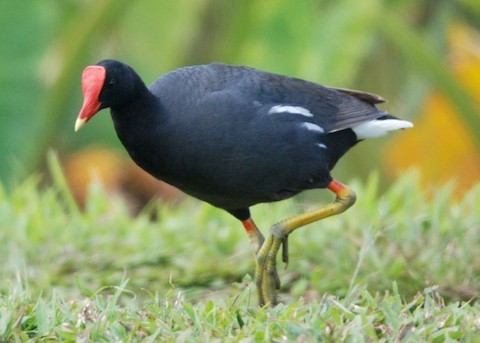Birdfinding.info ⇒ The Hawaiian endemic form of Common Gallinule is rare in absolute numbers but still locally common on Oahu and Kauai. Sites where it can often be found include: on Oahu, Hamakua Marsh, James Campbell and Pearl Harbor National Wildlife Refuges, and Waimea Valley Audubon Center; and on Kauai, Hanalei National Wildlife Refuge, Kawaiele Waterbird Sanctuary, and Kauai Lagoons in Lihue.
“Hawaiian Gallinule”
Gallinula galeata sandvicensis
Endemic to Hawaii, and resident on Kauai and Oahu, where it occurs in freshwater marshes and ponds with emergent vegetation.
Formerly also inhabited Ni’ihau, Molokai, Maui, and the Big Island.
Identification
Appears nearly identical to the widespread “American Gallinule” distributed throughout the Americas, but its upperparts tend to be blacker, its red frontal shield averages larger, and the red on its legs is sometimes more extensive—however, these features vary in both forms.
The “Hawaiian Gallinule” also differs from the continental forms in certain proportions—having slightly shorter wings and longer legs—but these differences are detectable only through measurements.
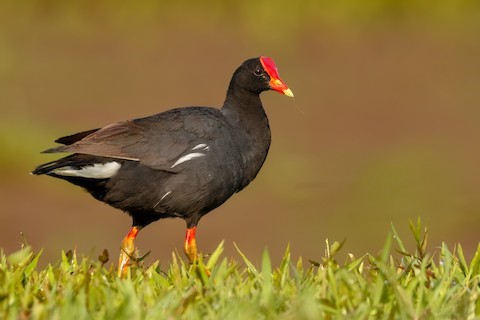
“Hawaiian Gallinule,” G. g. sandvicensis. (Hanalei National Wildlife Refuge, Kauai, Hawaii; June 9, 2018.) © Sharif Uddin
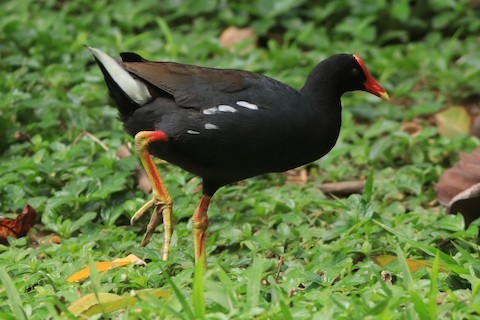
“Hawaiian Gallinule,” G. g. sandvicensis, showing extensive red on tarsus. (Koloa, Kauai, Hawaii; March 12, 2020.) © Bruce Davis

“Hawaiian Gallinule,” G. g. sandvicensis, extending a wing—which is somewhat shorter than on the continental form. (Hanalei National Wildlife Refuge, Kauai, Hawaii; February 26, 2016.) © Lisa Owens
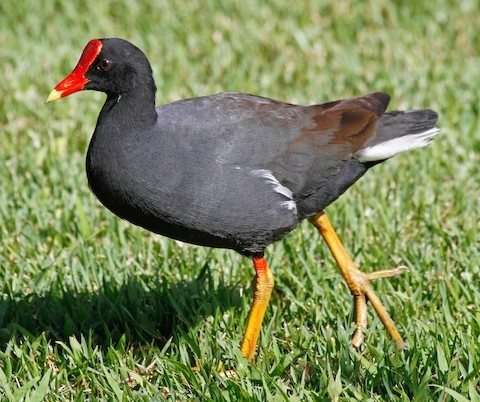
“Hawaiian Gallinule,” G. g. sandvicensis. (Allerton Garden, Lawai, Kauai, Hawaii; February 5, 2015.) © Jordan Roderick
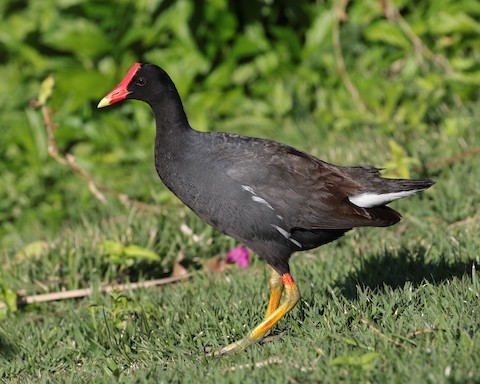
“Hawaiian Gallinule,” G. g. sandvicensis. (Hokuala Golf Course, Lihue, Kauai, Hawaii; February 9, 2020.) © Jan Liang

“Hawaiian Gallinule,” G. g. sandvicensis. (Hokuala Golf Course, Lihue, Kauai, Hawaii; October 3, 2015.) © Noam Markus
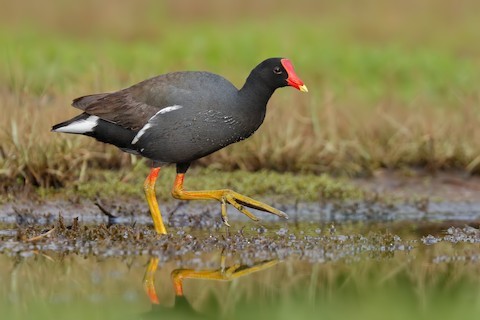
“Hawaiian Gallinule,” G. g. sandvicensis. (Kawainui Marsh, Oahu, Hawaii; December 31, 2017.) © Sharif Uddin

“Hawaiian Gallinule,” G. g. sandvicensis. (Pouhala Marsh, Oahu, Hawaii; July 24, 2012.) © Erik Atwell
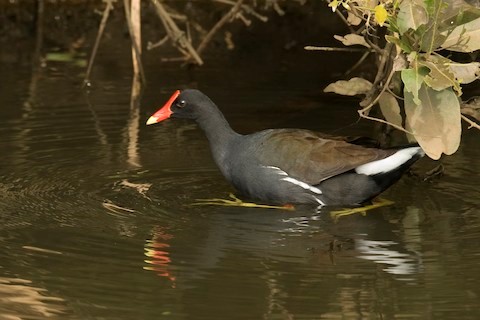
“Hawaiian Gallinule,” G. g. sandvicensis. (Kilauea Point National Wildlife Refuge, Kauai, Hawaii; November 5, 2009.) © Ken Langelier
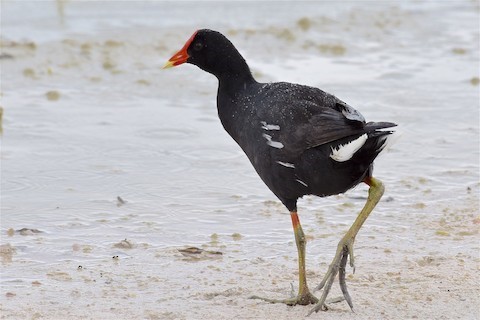
“Hawaiian Gallinule,” G. g. sandvicensis, showing nearly all-black upperparts. (Kawaiele Waterbird Sanctuary, Kauai, Hawaii; June 25, 2017.) © George Gibbs

“Hawaiian Gallinule,” G. g. sandvicensis. (Ohiki Road, Hanalei, Kauai, Hawaii; February 15, 2016.) © Nate Brown

“Hawaiian Gallinule,” G. g. sandvicensis, subadult. (Hanalei National Wildlife Refuge, Kauai, Hawaii; February 10, 2019.) © Katie Grigsby

“Hawaiian Gallinule,” G. g. sandvicensis. (James Campbell National Wildlife Refuge, Oahu, Hawaii; October 3, 2005.) © Michael Walther
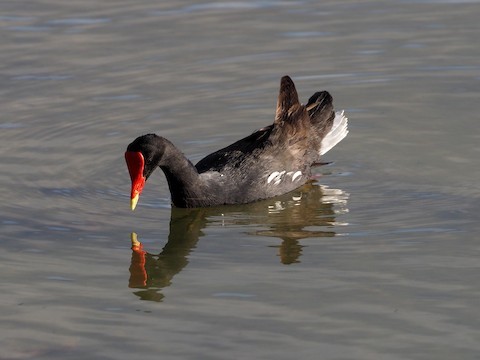
“Hawaiian Gallinule,” G. g. sandvicensis. (Kawaiele Waterbird Sanctuary, Kauai, Hawaii; January 30, 2019.) © John Anderson
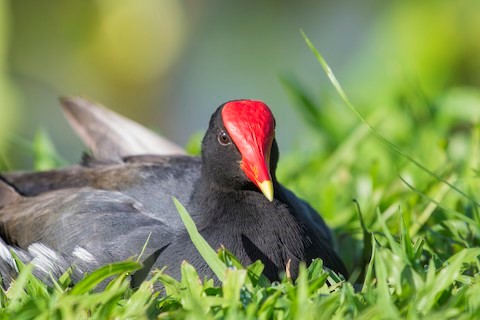
“Hawaiian Gallinule,” G. g. sandvicensis, showing an exceptionally large frontal shield. (Ohiki Road, Hanalei National Wildlife Refuge, Kauai, Hawaii; December 28, 2015.) © Carl Giometti
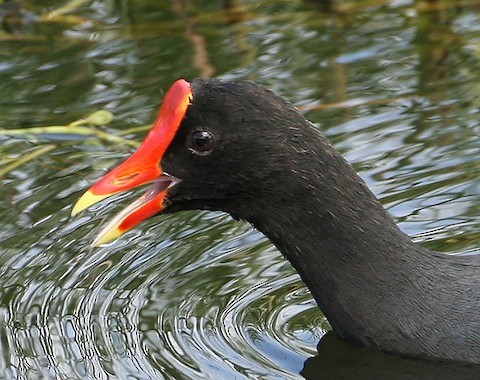
“Hawaiian Gallinule,” G. g. sandvicensis, close-up view of facial shield. (James Campbell National Wildlife Refuge, Oahu, Hawaii; October 3, 2005.) © Michael Walther
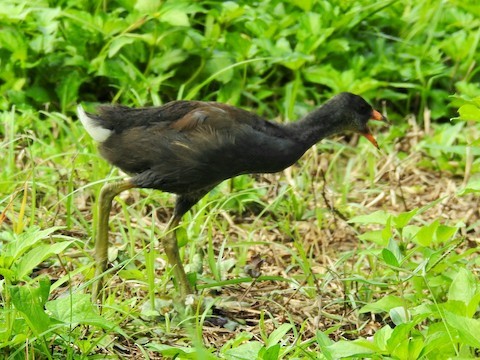
“Hawaiian Gallinule,” G. g. sandvicensis, juvenile. (Ohiki Road, Hanalei National Wildlife Refuge, Kauai, Hawaii; January 8, 2020.) © Joel Gilb

“Hawaiian Gallinule,” G. g. sandvicensis, juvenile. (Hanalei National Wildlife Refuge, Kauai, Hawaii; January 18, 2020.) © Ruth Smith
Notes
Monotypic form, one of three potentially distinct forms of Common Gallinule.
References
eBird. 2020. eBird: An online database of bird distribution and abundance. Cornell Lab of Ornithology, Ithaca, N.Y. http://www.ebird.org. (Accessed May 25, 2020.)
Pratt, H.D. 1993. Enjoying Birds in Hawaii: A Birdfinding Guide to the Fiftieth State (Second Edition). Mutual Publishing, Honolulu, Hawaii.
Pyle, R.L., and P. Pyle. 2017. The Birds of the Hawaiian Islands: Occurrence, History, Distribution, and Status. Version 2 (January 1, 2017). http://hbs.bishopmuseum.org/birds/rlp-monograph/. B.P. Bishop Museum, Honolulu, Hawaii.
Taylor, B., and B. van Perlo. 1998. Rails: A Guide to the Rails, Crakes, Gallinules, and Coots of the World. Yale University Press.
